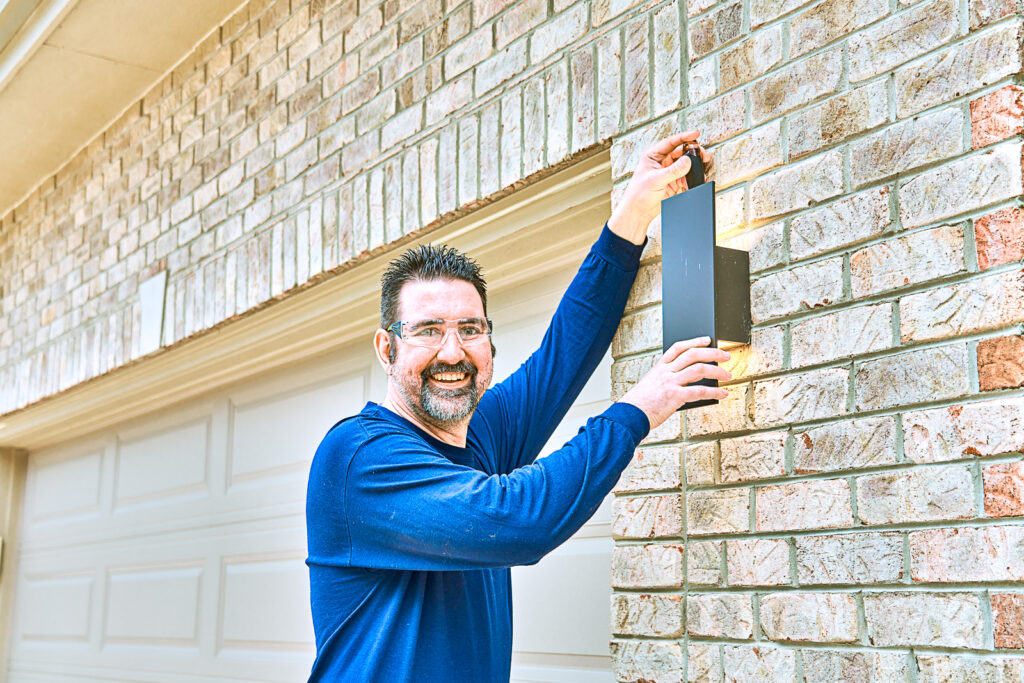You’re winding down after a long day at work, and the sun has finally dipped below the horizon of your St. Francis home. You’re looking forward to some take-out from Patty Shack and relaxing on the couch with the book you’ve been meaning to start all summer.
However, your outside light isn’t very bright, and the delivery driver passes your home three times before finally dropping off your now-cold burger. After reheating your food, you sit down in your living room, ready to salvage the night with a good read. You flick on the overhead light that casts a shadow on the book, and the lighting starts to give you a headache. This leaves you wondering…
Do I Have a Light Bulb or a Lighting Set-Up Issue?
When you have areas that are too dark or too bright to facilitate your needs, the answer is: probably both. Not all bulbs were made for the indoors, and different amounts of Kelvins (the measurement of Color Temperature) will make one room just right while another room too bright.
Your home’s default overhead lights are great to illuminate the room at large, but don’t create the right light to read or add an aesthetically pleasing feel to your space.
Don’t know where to start? We’ve got a quick and handy guide to give you the basics.
Lightbulbs 101
When we talk about light bulbs, we mention ‘Kelvin’ (K). Kelvin is the unit of measurement that measures the temperature of the bulb. It also indicates what color the bulb will emit. Most bulbs range between 2700K-5000K.
Bulbs that are around 2700K give off a yellow light and are typically used for lamps. General living areas, such as your home’s indoor overhead lighting, will most likely be between 2700K-3000K. You can get a range of colors from these bulbs, the higher the Kelvin, the whiter the light.
Most bulbs that are at 4000K and above are the tube lights that you see in garages or outside. These bulbs give off a white, almost bluish light and are more likely to give you headaches.
It’s important to note that many fluorescents can be replaced with their power-saving LED counter-parts. Though the upfront cost is higher, you will save money in the long run on your energy bill.
Types of Indoor Lighting
- Ambient Lighting provides overall illumination to a room and sets the general mood. These are your ceiling mounted fixtures, recessed lights, and chandeliers.
- Task Lighting is focused lighting for specific activities. This can include desk lamps, under-cabinet lights, and pendant lights.
- Accent Lighting adds drama and highlights features or objects. This can be track lighting, wall sconces, and picture lights.
We recommend you look for energy-efficient lighting, such as LEDs, that save money with their reduced energy consumption and allow for customization with different colors and dimmable options.
Types of Outdoor Lighting
- Safety Lighting provides safety and security for your home. These lights are installed along pathways, staircases, and entrances. They often are motion sensor activated.
- Landscape Lighting enhances the beauty of outdoor spaces. These can be spotlights, well lights, path lights, and garden lights.
- Outdoor Entertaining Lighting facilitates outdoor gatherings and activities. These are the fun and decorative fixtures like string lights, lanterns, or task lighting near cooking and dining areas.
Make sure your outdoor lighting is built to withstand outdoor use and changes in weather. Before you buy, check for an IP (Ingress Protection) rating to ensure they will last, even under exposure to dust and water.
Need More Than a New Lightbulb? Capital Can Help
It’s not just about the lighting you choose but the wiring and placement, too. That’s why our highly trained electricians are just a call away, ready to best plan for your lighting wants and needs.
Whether it’s with lighting installation, replacement, or repair, let Capital light your way, with red carpet service and superior workmanship. So when you sit down at the end of a long day, you only have to lift a finger—flick.


 5 Best Practices to Keep Your HVAC Running Smoothly
5 Best Practices to Keep Your HVAC Running Smoothly